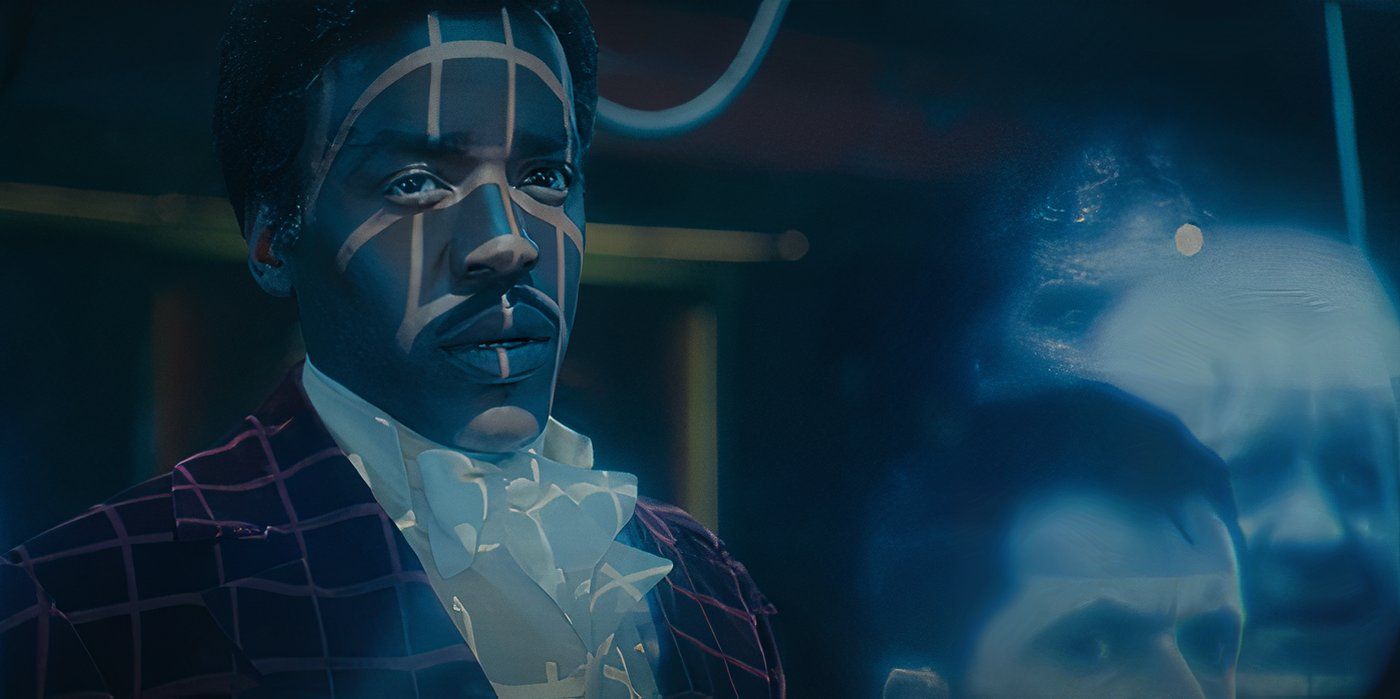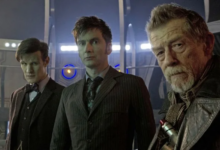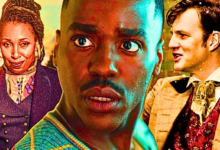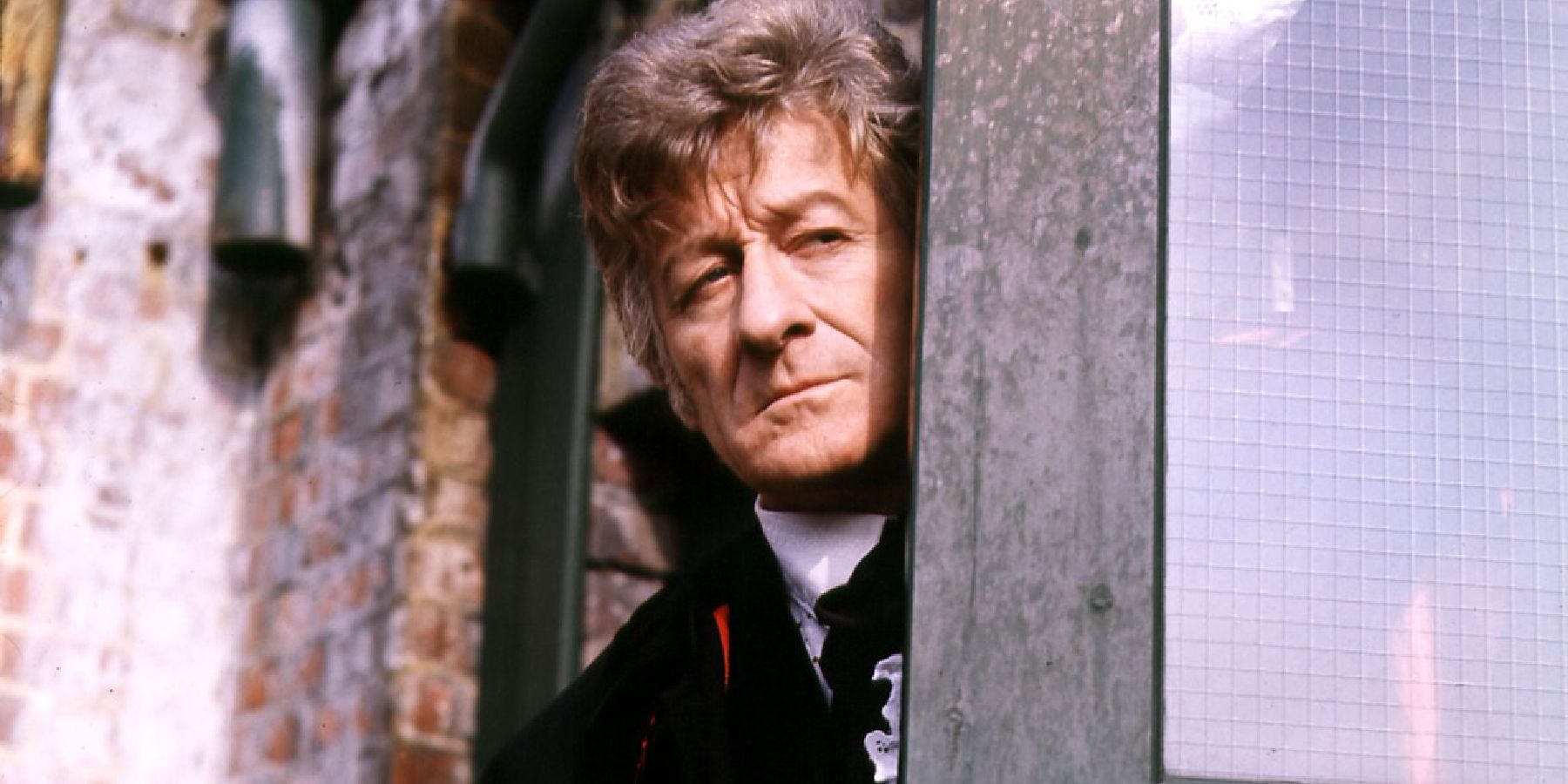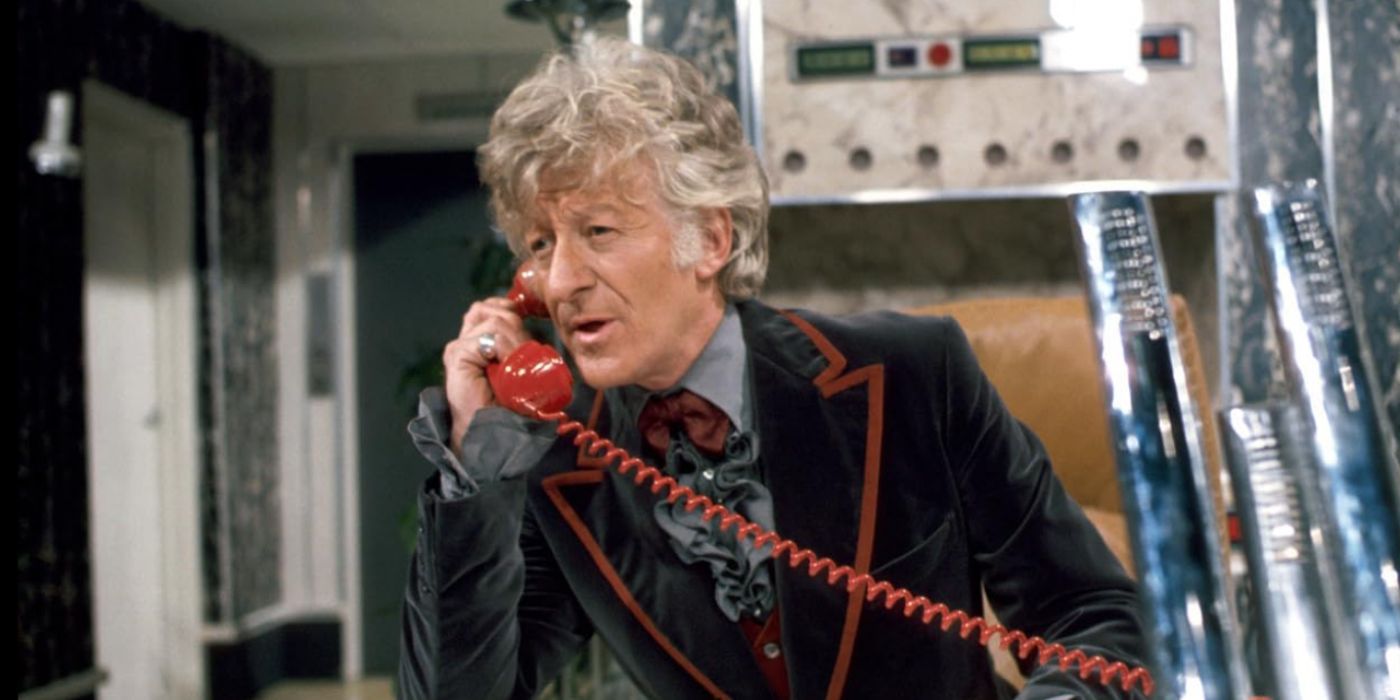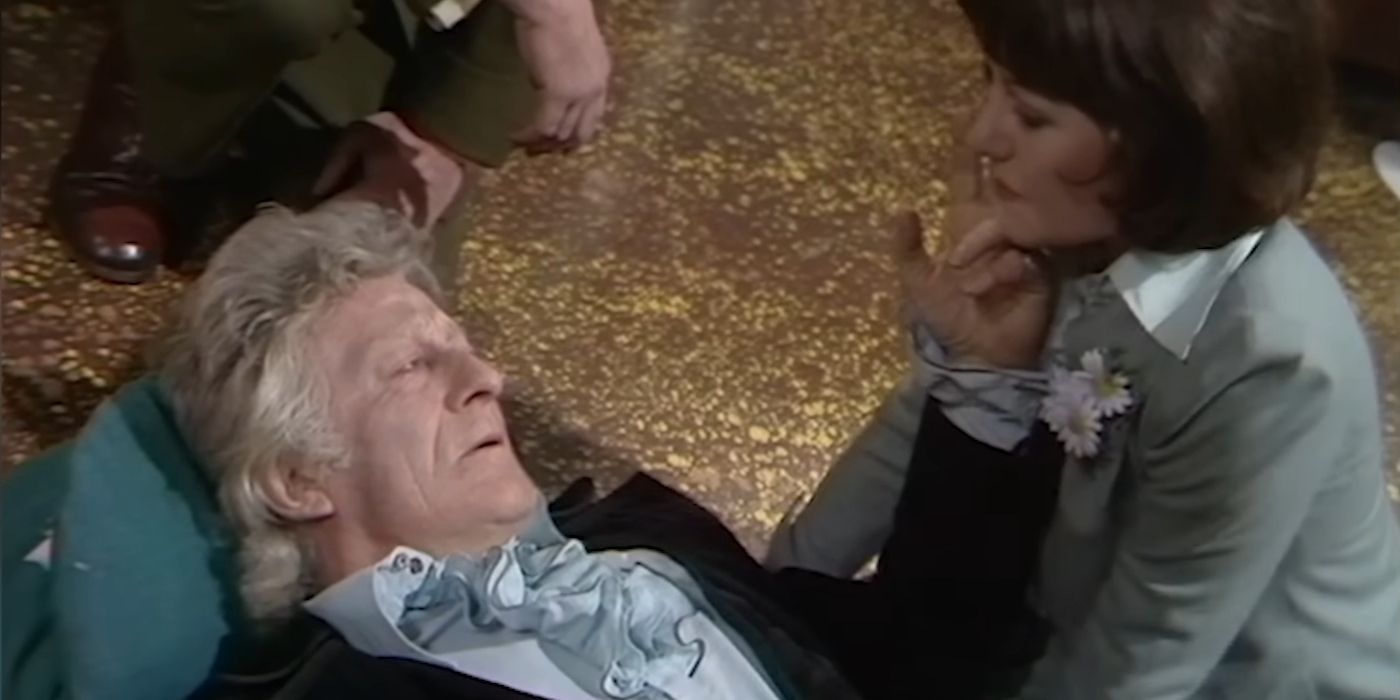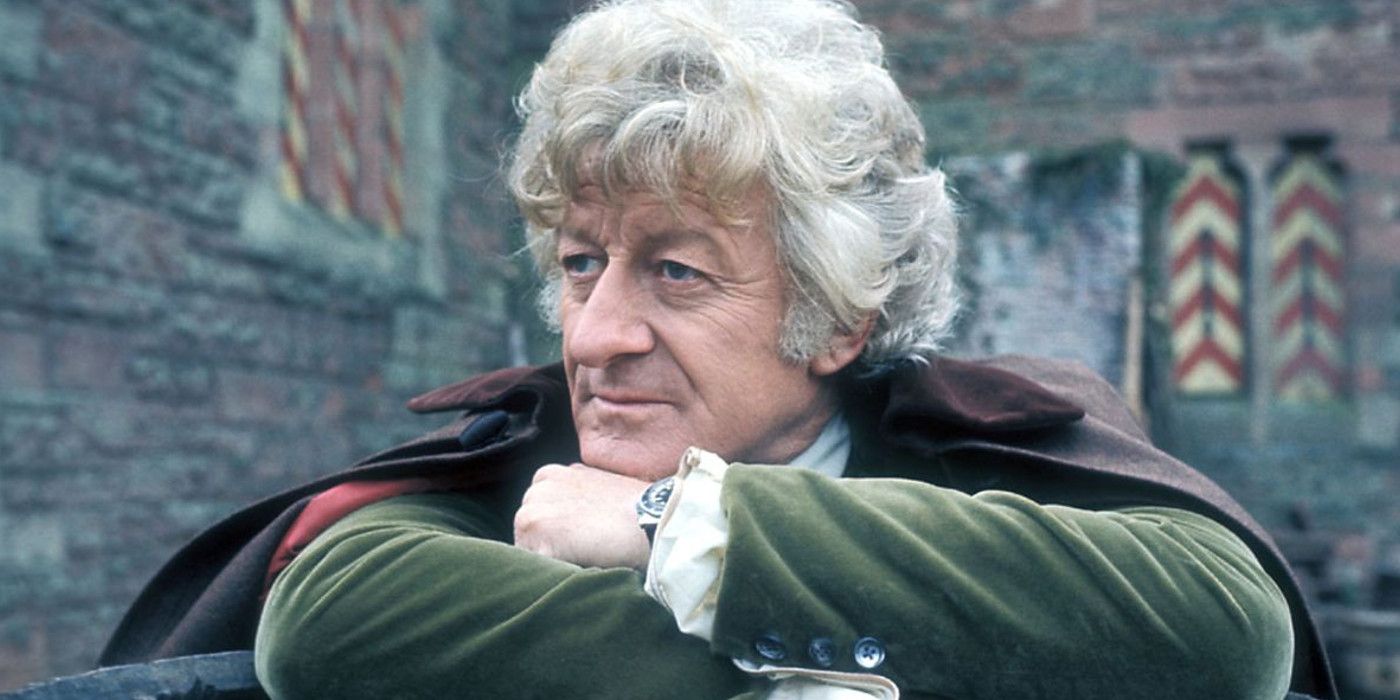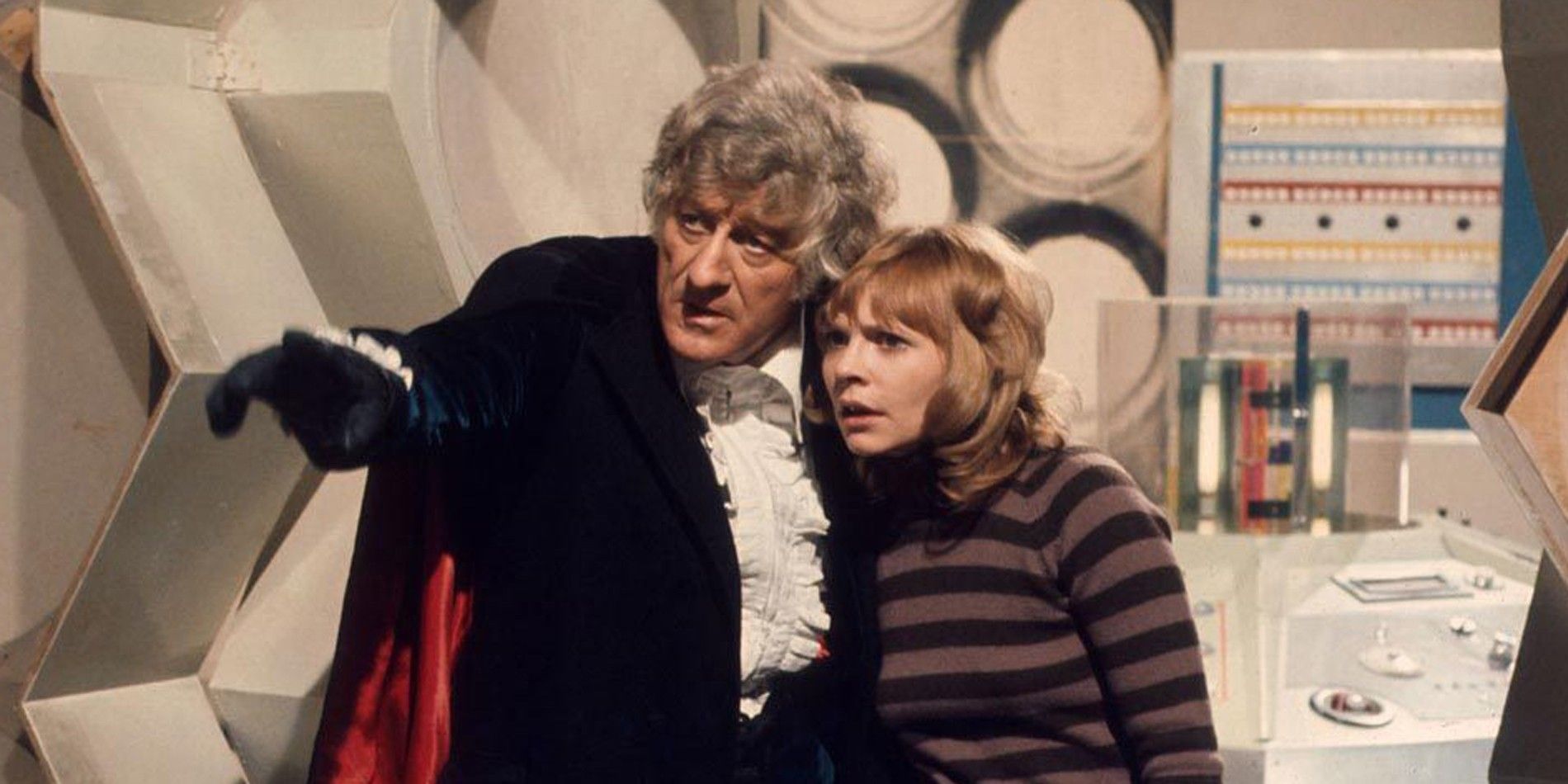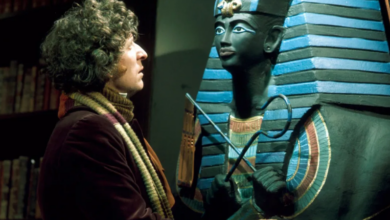Why The Third Doctor’s Hologram Looks Older In Doctor Who Season 14, Episode 6
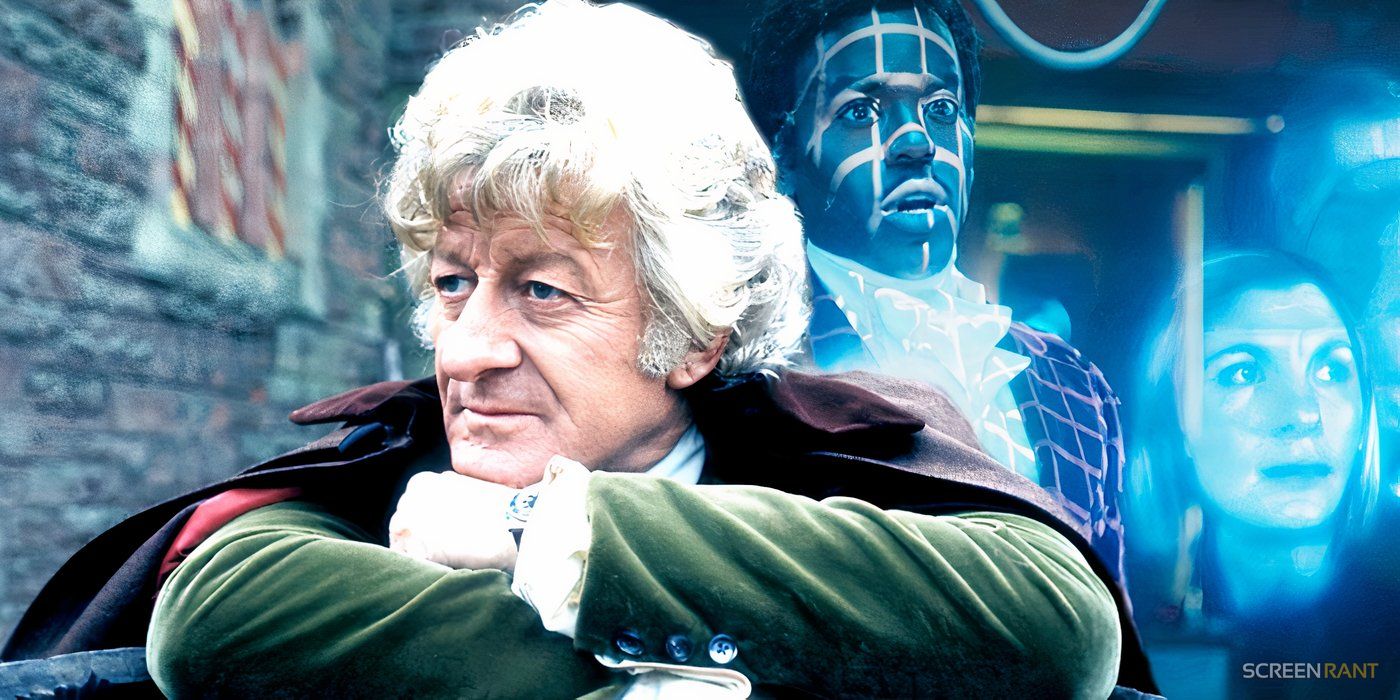
SUMMARY
- Jon Pertwee’s Third Doctor hologram in “Rogue” appears much older due to a possible bi-generation twist in Doctor Who ‘s storyline.
- The aging-up of Pertwee’s Doctor suggests the potential for a Third Doctor cameo, possibly played by his son Sean Pertwee.
- The holographic scene featuring different versions of the Doctor hints at a complex Doctor multiverse and alternate realities within the franchise.
Doctor Who season 14, episode 6, “Rogue,” pays visual tribute to every actor who’s played the Doctor, but Jon Pertwee’s holographic avatar looks far older than he did during any of his appearances within the franchise. Thankfully, there’s a viable explanation for why Pertwee’s age in the ghostly image doesn’t align with his time as the Third Doctor. The choice feels intentional and suggests a handful of possibilities for the actor’s iteration of the Doctor in the near future.
Jon Pertwee led Doctor Who from 1970 to 1974, and he was the first actor to play the Doctor to enjoy the benefit of being shot in color. He was incredibly authoritative and much more technology-orientated than his two predecessors. His cameo in “Rogue” is incredibly fleeting, and while it didn’t really make him a member of the Doctor Who season 14 cast, it was great to see him return in any form. However, there’s clearly more to Three’s brief role than is obvious, and it all comes back to his apparent age.
The Third Doctor looks the oldest he’s ever been in “Rogue”
When Ncuti Gatwa’s Fifteenth Doctor is showing his former faces to Johnathon Groff’s Rogue in Doctor Who season 14, episode 6, the audience is treated to a parade of recognizable figures who have led the show or have at least appeared as the Doctor. Among these is Jon Pertwee, but not a version of the actor with which Doctor Who fans will be familiar. Pertwee looks notably older than he did during his run on the show. Even when he returned to reprise the role in 1983’s “The Five Doctors,” he still looked younger than how he’s represented in “Rogue.”
“The Five Doctors” was Jon Pertwee’s final canon appearance as the Doctor, although the 20th-anniversary special was actually produced for Children in Need rather than Doctor Who. Either way, “Rogue” seemingly shows the Third Doctor at a point much later in his life than ever before. However, what doesn’t make sense is that he never looked so old when he regenerated into Tom Baker’s Fourth Doctor – so there may be other forces at play.
The Third Doctor’s Older Hologram May Be Caused By Doctor Who’s Bi-Generation Twist
Pertwee’s Doctor may have survived the events of his “final” episode
The ending of the Doctor Who 60th-anniversary specials introduced the shocking twist of bi-generation. A process that’s barely understood, even by the Doctor, bi-generation allowed for David Tennant’s Fourteenth Doctor to recover from his injuries while spawning another version of himself who was fully autonomous. This was how Ncuti Gatwa’s Fifteenth Doctor entered the fray. Showrunner Russell T Davies has been very vocal about his own theory that the bi-generation scene in “The Giggle” wasn’t an isolated incident and that it happened to all Doctors up and down the timeline. If so, this could explain Pertwee’s age issue in “Rogue.”
Just as Fourteen survived his bi-generation process and went on to live his life, Davies’ hypothesis proving true would mean that Jon Pertwee’s Third Doctor would also have remained in existence while spawning Tom Baker’s Fourth. Then, Four would likely have gone on to live a life very similar to the one that’s shown in Doctor Who, while Three would have ventured off and started a new branch of the Doctor’s complex timeline. This would create a sort of Doctor multiverse, creating new stories.
While Davies’ theory hasn’t been established as canon, his status as the Doctor Who showrunner means his ruminations hold a great deal more weight than the average person.
While Davies’ theory hasn’t been established as canon, his status as the Doctor Who showrunner means his ruminations hold a great deal more weight than the average person. If he’s correct, the Third Doctor could have lived a much longer life than the version that’s known to Doctor Who fans. Although Time Lords age much slower than humans, they do become visibly older over time – as evidenced by Matt Smith’s Eleventh Doctor in “The Time of the Doctor.” So, the version of Three shown in “Rogue” could be the bi-generated version, which lived on to create an alternate timeline.
The Third Doctor’s Hologram May Be An Alternate Version
This version of Pertwee’s Doctor may never have appeared in Doctor Who
There is another theory to suggest that perhaps the hologram of Jon Pertwee is showing a version of the Third Doctor from another reality entirely. This is supported by the fact that the set of holographic Doctors includes a face belonging to someone who has never been shown to play the Doctor in live-action. Sandwiched between William Hartnell’s First Doctor and Tom Baker’s Fourth is a face that looks very much like Richard E Grant. If it is him, then this could have huge implications for the Doctor Who universe.
Although Grant has never played the Doctor on-screen, he has voiced a version of the Ninth Doctor in an animated Doctor Who series called “The Scream of the Shalka.” As such, this version of the character is often referred to as the Shalka Doctor. “The Shalka Scream” was put into production just before 2005’s Doctor Who revival was confirmed, but it aired after Christopher Eccleston was announced to take to the screen. For a short while, there was some confusion about whether Grant or Eccleston would earn the title of the Ninth Doctor, but Grant’s version was eventually painted with the non-canon brush.
“The Shalka Scream” first aired in late 2003, and Eccleston’s Doctor Who debut was in 2005.
If Richard E Grant’s Shalka Doctor is being re-established as Doctor Who canon, then the alternate reality of the animated show could be colliding with the main body of the franchise’s lore. Similarly, the older version of Jon Pertwee’s Third Doctor could also be getting dragged into Doctor Who‘s main continuity, with bi-generation altering the trajectory of his life and how it interacts with that of Ncuti Gatwa’s version of the Time Lord.
Doctor Who’s Hologram Scene May Be Setting Up A Third Doctor Cameo
Pertwee’s son could be set to inherit the role of the Third Doctor
All the other former live-action Doctors during the hologram scene in “Rogue” look very recognizable as their respective versions of the character. The sequence is even accurate enough to include two versions of David Tennant – although they both look suspiciously like the Tenth Doctor rather than one being the older Fourteen. Pertwee is the only one who looks notably older than he was for any of his Doctor Who appearances, which feels like a specific choice to make unless he’s coming back to the show soon.
Rumors have been swirling for a while now that the Third Doctor will return to the show, perhaps played by Sean Pertwee, son of the original actor. The Gotham actor is in his early sixties, and so he’s roughly a decade older than his father was when he debuted as the Third Doctor back in 1970. However, he could still do a convincing job, with the family resemblance serving as a huge advantage. The aging-up of Three in “Rogue” goes far beyond Sean Pertwee’s current appearance, but it could still be a clue relating to an upcoming Doctor Who cameo.
